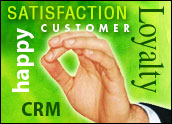
I recently read Tribes by Seth Godin and I think it might hold some clues to the future of CRM. Godin is a business blogger and author of more than a dozen books with titles like Permission Marketing and Purple Cow. He’s not about the status quo, he’s all over change and leadership like a junkyard dog.
One of Godin’s points — something that I have tried to articulate with less success — is that our business and personal relationships are tribal and, parenthetically, social media is an ideal tool for communication within the tribe. Godin’s point is that tribes are a natural form of association, and leveraging them is a strong human drive. Tribes are everywhere or they are waiting to form, waiting for someone to exert leadership.
Leaders and Members
If you have a Facebook, Twitter, LinkedIn or other social media account and people subscribe to your posts, you are a tribe leader. You are also likely to be a tribe member for the same reason. In business, customers more or less fit the description of tribe members, though something of tangible value is often involved in the relationship too.
In an expanding market, a tribe might be nothing more than a customer base, especially at the beginning. Vendors have most of the relationship power in expanding markets because customers are often busy figuring out what a product really does. Nonetheless, a very loose alliance of customers inevitably begins to come together around shared interests. It starts simply enough — someone hosts a meeting, writes up some reasons the group wants to exist, and members trade contact information so that they can communicate, and there it is. Godin says that’s about all a tribe needs — a shared interest and a means of communication, and isn’t that what social media provides?
If you’re a savvy vendor, you might look for ways to engage the group so that you can benefit from its ideas and maybe even share some ideas of your own. If you’ve been using a product like RightNow or Salesforce, you are a member of those tribes. You may go to annual or regional meetings and trade ideas online with other members. You may also offer suggestions for improving these services through the tribe. A smart vendor will also want to hear what the tribe is discussing and ask a few questions for clarity, too.
Tribes are not limited to a kind of product or service, such as technology. Starbucks has a thriving tribe consolidated around not coffee, per se, but the Starbucks experience. Visit the MyStarbucksIdea hosted by Salesforce.com and you will see what I mean.
Who Talks to Whom?
As you may know, I think that the era of expanding markets and exponential growth is at least taking a pause, and it may even be over for a while. What replaces an expanding market is often a zero-sum market — a situation where your best customers are your best customers. In other words, the people who bought from you are the people you expect to sell to again (and again).
Zero-sum markets are positively tribal — iPhone or BlackBerry, Bud or Coors, Starbucks or Dunkin’ Donuts, Coke or Pepsi, paper or plastic, and on and on. CRM can play a natural role in tribal markets. If your tribe is your customer base — and all those who would be customers (and it is) — then CRM ought to be the tool you use to share your thought leadership.
But here’s the thing: It’s more than bi-directional, vendor to customer communication. It’s omni-directional, including customer to customer, vendor to customer and customer to vendor. It’s also much more than a vendor using social media to promote a product or service.
My only critique of Tribes is that there isn’t much explicit discussion of the importance of capturing customer input, though it’s certainly there if you read between the lines.
Social media came along at a perfect time for all of this tribalism, and we adopted it in our personal lives with stunning results. Business adoption is something different, though, and I think business has been somewhat hobbled by a too-literal interpretation and translation from personal to business.
We hardly think about our personal thought leadership because it is so much a part of us, but in business, thought leadership is not a single person’s view. It’s something that gets synthesized from many external and internal inputs; that’s why inbound social media is so important.
Your friends might follow you simply because you are you, or maybe you are a natural leader, but customers need a reason, and that’s why I focus on social media that capture customer voice. Godin’s idea of tribes comes along at a good time. Vendors need a way to address customers that’s more effective than the marketing we did in the expanding markets era, and thinking of the customer base as a tribe has a lot going for it.
Denis Pombriant is the managing principal of the Beagle Research Group, a CRM market research firm and consultancy. Pombriant’s research concentrates on evolving product ideas and emerging companies in the sales, marketing and call center disciplines. His research is freely distributed through a blog and Web site. He is working on a book and can be reached at [email protected].
























































Great article. No doubt social networking is redefining CRM. For further reading, Intelestream has recently published a whitepaper about the subject. The whitepaper defines the concept of Social CRM, offers strategies that can help organizations better leverage social networking as part of their overall customer management strategy, and outlines steps that businesses can take to develop a tangible integration between social networking and traditional Customer Relationship Management. The paper can be read at http://www.intelestream.net/en/whitepapers/the-power-of-social-crm.html